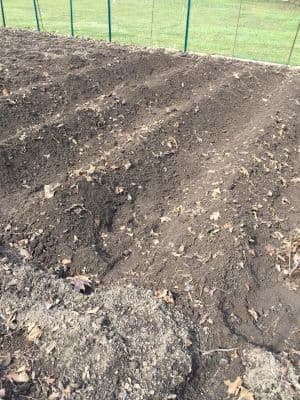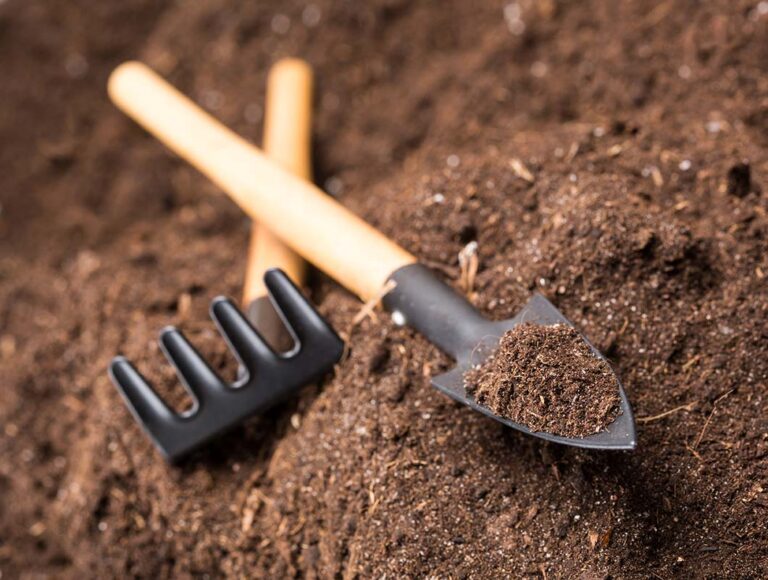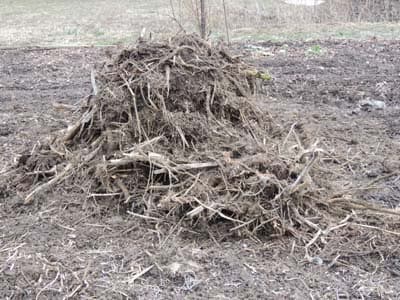Healthy Garden Soil

Your Garden Soil and You
Rich and healthy garden soil is absolutely essential to your plant’s health. If you grow fruits and vegetables, your soil’s health can have an impact on your health too! There are chemicals and micro-nutrients present in all types of soils, which are essential for healthy plant growth. Some chemicals are bad and can harm your plants or stunt their growth, too. What is in your garden soil, can get ingested by your plants. Humans are one step up the food chain. What your plants ingest gets into your system and your family too!
Learning about your soil, and how to improve it, will make you a much better gardener, and keep you and your family healthy. You’ll be pleased with your plant’s appearance and performance as you improve the quality of your garden soil.
Types of Garden Soil
There are several types of soil. Some plants prefer one type over another.
Sand – This is grainy soil, which holds little or no compost or humus. It drains very well and holds little water. It lacks in minerals and micro-nutrients needed by plants. The roots of plants can easily grow and expand through the sand. We all know that Cactus grows in sandy soil. But, did you know that peanuts prefer sandy soil, too?
Clay – This is the second most common type of soil. It is largely the opposite of sand. It retains water and does not drain well. Heavy clay soils can act as a pot, holding water for days, if not weeks. Water ever so slowly seeps through it. Roots can drown, as there is no air in the soil. Roots have a hard time pushing through it and tend to ball up.
Loam – This is soil contains a mixture of clay, silt, and sand, as well as some organic matter. It retains water well, yet is loose and contains plenty of air pockets for roots to breathe. Best of all, it is rich in minerals and nutrients vital to your plant’s growth and development.
Humus – Soil containing a rich mixture of decomposed plant or animal matter. It is rich in minerals and nutrients vital to your plants’ growth and development.

Manure is a Great Soil Amendment
Manure is animal excrement. It is usually mixed with straw or sawdust that is laid down in the animal’s stall, cage, or pen. Everyone agrees that well-composted manure is the absolute best amendment for improving your garden soil. But what kind of manure is best? Most people obtain whatever manure is available in their area. The most commonly available manures are cow and horse manure. There are also others such as chicken, duck, geese, rabbit, and even pig.
Question: Is anyone out on there using Bat Guano? Some people say that Bat Guano is the absolute best of manures. Personally, I think my daughter’s hamster produces the best manure. Now if I can only get that little hamster to produce more……….
Unless you are well-read on this topic, I’d suggest sticking with the horse and cow manure, even though any kind of decomposed manure is better than no manure. Of these two options, cow manure is better in the sense that the cow processes its food far more efficiently. Horse manure contains many small seeds that have passed through the horses’ system unprocessed. Surrounded by all the rich compost, those weed seeds will thrive in your garden. To minimize this, try to obtain an adequate amount well in advance. Pile it high in your garden and let it cook(compost) over the winter or for a few weeks before use.

Compost Improves Garden Soil
Compost is one of the best friends a gardener can have. Just about all vegetation (trees, flowers, fruits, vegetables, shrubs, weeds, etc) thrive on compost or mulch. Most gardeners have a composter or a compost pile, where we throw anything and everything from the plant world. Most of us are not picky at what we throw in there, and most vegetation is perfectly fine to include in our compost pile.
It is difficult to make a long-term mistake with the compost pile. If you do not turn it and keep it moist, it will still decompose. It will just take a little longer and may smell a lot more as it decomposes. A common error is to pile grass clippings too thickly. This results in a strong odor but does not affect the eventual decomposition.
Most people do not put meat and other table scraps composed of animal matter into the compost pile. This is because they attract other animals and pests. We encourage using only those table scraps that are composed of plant matter.
Make sure the things you put in the compost pile are clean and free of bacteria. If you had bacterial wilt or other disease problems with your crop, do not throw it on the compost heap. If the pile is not hot enough, the disease will winter in your compost pile and re-infest the next year’s crop.

Leaves and Leaf Mulch (Black Gold)
Leaves are a frequent additive to the garden. Most(but not all) leaves are fairly neutral in ph, and overall are healthy for the soil and plants. I prefer Oak and Maple. Be cautious if you are getting them from the side of the road. Some leaves such as Black Walnut contain toxins that are harmful to plants. On occasion, people will put other trash into leaf bags. Watch for this trash and remove it, as you add the leaves to your garden or compost pile.
In my town, we have a yard waste recycling program. Leaves are mulched at the town site each year. The resulting mulch, which my neighbors and I call “Black Gold”, is available at no charge for use by residents. Mix ample amounts into your garden’s soil. Everything we have ever grown in Black Gold has produced stellar results. Try it on root crops such as carrots or beets. The roots develop easier in the improved, soft soil.
There are other mulches as well. These include pine mulch and wood chips and lawn clippings. The drawback to some of these is acidic ph levels, little nutrient value, or raw compost which can result in burning your plant if piled too thickly. Unless you’ve done your research on a particular material, use caution. Apply them in small amounts, or avoid them together
More Soil Amendments
Ash from the fireplace. Not only is it high in potash, but it helps to raise the pH level.
Fish entrails are great fertilizers for any plants – lots of nutrients (Caution: use well-composted material or you may find the neighborhood cats weeding your plants).
Coffee grounds, but it is hard to get a large supply. Coffee grounds are rich in potassium.
Household scraps- vegetable matter only.
Ph Level of Garden Soil
“Ph” is a measure of acidity or alkalinity. Each plant in your garden or yard has an ideal range that it will thrive in. It is helpful to test your soil ph and adjust accordingly. Keep in mind that the amendments you add could alter the ph.
Soil testing is not an absolute necessity, although it is recommended. If your gardening area has proven productive over the years and you are constantly adding amendments in some balance (acidic versus alkaline), you may opt not to test it. Some gardeners have never tested their soil.
New growers and especially people who are experiencing problems with growing other crops in the soil should take this test.
Your local agricultural agency can either perform tests or direct you to an organization that does. You can also ask your local garden store how to have your soil tested.
Another fun way is to buy an inexpensive soil tester and test the soil yourself. You can test for soil pH and basic nutrients. While not as in-depth as a commercial soil test, it is far more fun. If you are in the market for a soil tester, please support us.
Cover Crops
Commercial growers plant a “cover crop” in their fields over the winter. The most common crop is annual or winter ryegrass. The grass is sowed in the fall and plowed or roto-tilled in the spring. Cover crops benefit the field in two ways. First, the grass adds nitrogen to the soil. Second, it reduces soil erosion due to wind, rain, and run-off during the long offseason.
This concept is commonly practiced in commercial farming and can be practiced in smaller home gardens, too. Strangely, most home gardeners do not practice this.
You are What You Eat
Pesticides, herbicides, and fungicides are commonly used by commercial growers. Its use is regulated by the U.S. Department of Agriculture. Despite this regulation, many people still worry about the potential for residual chemicals in the food supply. And, with just cause, as it is our bodies that might be absorbing those chemicals. A large number of home gardeners participate in the great hobby called gardening to eliminate or control chemicals in their food. Organic gardening thrives on the concept of no chemicals and uses only naturally sourced fertilizer and nutrients for the organic garden.
A home gardener often avoids using chemicals entirely or uses less harmful chemicals in limited amounts. In minimizing the use of chemicals, it is important for gardeners to know what they are doing and to follow the instructions carefully.
There are many other ways for unwanted chemicals to get into your garden. Here are some of the major ways:
Seepage through the soil either underground or surface water. This is especially a concern for lawn care products where chemicals can seep through your soil. If your garden is uphill of a treated lawn, you are more at risk.
Contaminated creeks. If you take your water from a nearby creek, unwanted chemicals may be in the water. We recommend you test it first, especially if you are in a suburban or urban area.
Compost material and amendments. Fireplace ash is a good example. While wood ash is a great soil amendment, the things people burn in fireplaces often contain harmful chemicals. Tops among them are newspapers and magazines in color, plastics, and mixed garbage. If you are going to put it into your vegetable garden, make sure it is pure…chemically.
Please support our site. Shop for:
- rmmatthews100@hotmail.com
- 585-721-6528
- Rochester, NY
©1999-2024 GardenersNet.Com, All Rights Reserved

